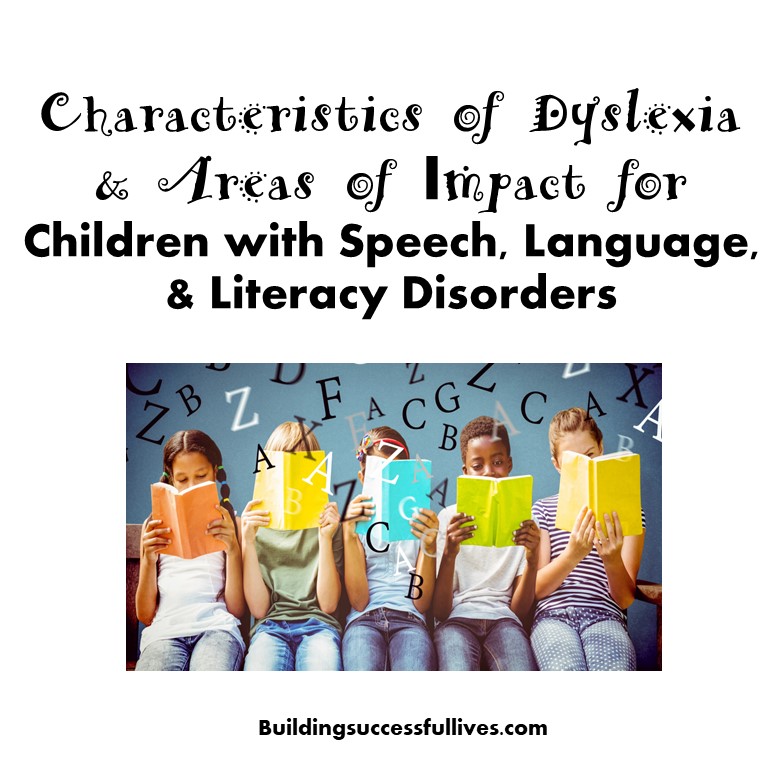
Dyslexia is a language-based learning disability that is characterized by deficits in understanding and using the phonological system for literacy. Students with dyslexia usually experience difficulties with other speech and language skills such as spelling, writing, and pronouncing words. Dyslexia affects individuals throughout their lives; however, its impact can change at different stages in a person’s life. It is referred to as a learning disability because dyslexia impacts the way a person’s brain processes information and subsequently can make it very difficult for a student to succeed academically in the typical instructional environment. In its more severe forms, it will qualify a student for special education, special accommodations, or extra support services.
About 15%-20 % of people have characteristics of dyslexia in the United States (United States Department of Health and Services).
People with dyslexia may exhibit challenges with:
- Learning to speak
- Learning letters and their sounds
- Reading decoding and fluency
- Organizing written and spoken language
- Memorizing number facts
- Reading quickly enough to comprehend
- Persisting with and comprehending longer reading assignments
- Spelling
- Learning a foreign language
- Correctly doing math operations
How is dyslexia treated?
Educators and speech/language pathologists must first recognize the characteristics of dyslexia and provide language/literacy screenings. Then skilled intervention should be provided in the Multi-Tiered System of Supports (MTSS) and subsequently from the Special Education program as deemed necessary in the public school system. MTSS helps educators provide academic interventions and strategies for students struggling with various skills. Schools can implement academic accommodations and modifications in the classroom to help students with dyslexia succeed. For example, a student with dyslexia can be given extra time to complete tasks, help with taking notes, and work assignments that are modified appropriately. Educators can read aloud test questions and answer choices or allow students with dyslexia to use alternative means of assessment. There are private schools and speech/language pathologists that specialize in providing dyslexia assessment and intervention.
Early intervention that specifically targets phonology, sound-symbol association, semantics, morphology, and syntax can significantly influence the language and literacy skills for children with dyslexia. By practicing structured language and reading strategies from an early age, dyslexia characteristics may be reduced or hardly recognizable. Older students can benefit by reading texts with an audiobook simultaneously. In addition, as professionals, it is important provide empathy and guidance for individuals with dyslexia.
As speech language pathologists, we can use the Orton Gillingham Approach when aiding a child with dyslexia. Using various speech techniques in cuing, the Orton Gillingham Approach includes multisensory, phonetic, sequential, repetitive, incremental, cumulative, individualized, and explicit strategies to help children with dyslexia. It is also important to note that using principles of structured literacy instruction is an excellent method to remediate language-based learning disability, reading disorders, and/or dyslexia. The five key elements in structured literacy are phonemic awareness, phonics, fluency, vocabulary, and comprehension.
Keep in mind that there are other multisensory reading approaches or programs to successfully remediate language-based learning disability, reading disorders, and/or dyslexia including Wilson Reading System, Barton Reading & Spelling System, and S.P.I.R.E. Reading Program. However, the structured literacy approach is the most effective multisensory approach for children who experience significant and unusual difficulty learning to read and spell printed words.
Research indicates that the majority of children learn to read best with direct and systematic language and literacy instruction in the key structured literacy areas of phonology, sound-symbol association, syllables, morphology, syntax, and semantics.
Dyslexia may impact various areas in the human system:
- Visual and/or Auditory
- Phonological Processing
- Spatial/Sequencing
- Temporal
- Language
- Organization
Each child should be treated individually. For every area, each child experiences dyslexia differently. One may have co-occurring impacted areas, while some children may experience one or two areas of impact.
Visual symptoms may include an interrupted style of learning in pictures, diagrams, demonstrations, displays, handouts, films, etc. Auditory symptoms may include difficulty with the transfer of information through listening to verbal speech and discriminating/identifying letters and their corresponding sounds.
Phonological processing deficits include challenges with the sound structure of spoken words. Children will demonstrate difficulty distinguishing various sounds. It is a core deficit in processing the sounds of a language. For example, it may include the difficulty of pronouncing words, remembering names, identifying words or rhymes, segmenting sounds, blending sounds, and manipulating sounds essential for effective reading and spelling.
Spatial/sequencing symptoms can include a disruption in various senses that may combine in different ways such as orientation and/or sequencing.
Temporal symptoms involve uncontrollable emotions, language, and certain aspects of visual perception as well as orientation and/or sequencing.
Language symptoms include deficits in both spoken (expressive and receptive) and written language as well as how we process language.
Children with dyslexia and co-occurring ADHD and/or executive functioning disorder often demonstrate challenges with organizational tasks. Specifically, some children may experience difficulty with oral expression, handwriting, writing cohesive information, and/or completing everyday academic tasks with multiple steps. They need language scaffolding, visualization strategies, and metalinguistic strategies to break down large functional and curriculum tasks at school and home so they can complete them. They need practical strategies to improve their focus during the school day in order to listen attentively and learn curriculum content. Additionally, parents may seek guidance from a pediatrician, school psychologist, or neuropsychologist, regarding the possibility of medication management for ADHD symptoms.
Other co-occurring characteristics with dyslexia may include:
- Working memory weakness
- Processing speed weakness
- Social/emotional challenges
- Motivation difficulties
- Math difficulties
- Low self-esteem
Children with dyslexia are in every classroom in public and private schools. Therefore, it is imperative that they receive speech/language/literacy screenings, comprehensive evaluations, speech/language therapy, and special education services as deemed appropriate by trained professionals. If you have further questions, contact Building Successful Lives Speech & Language Services to inquire about consultative and direct speech/language/literacy services.


